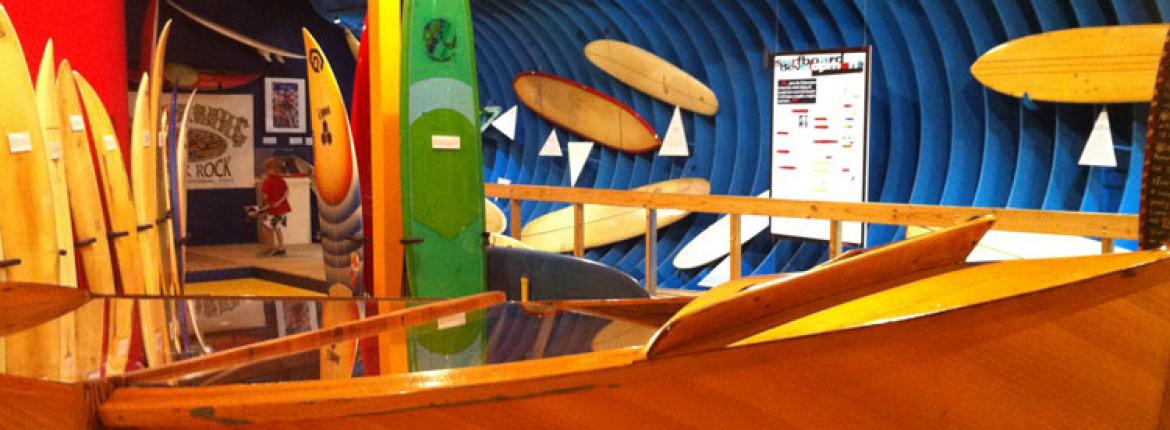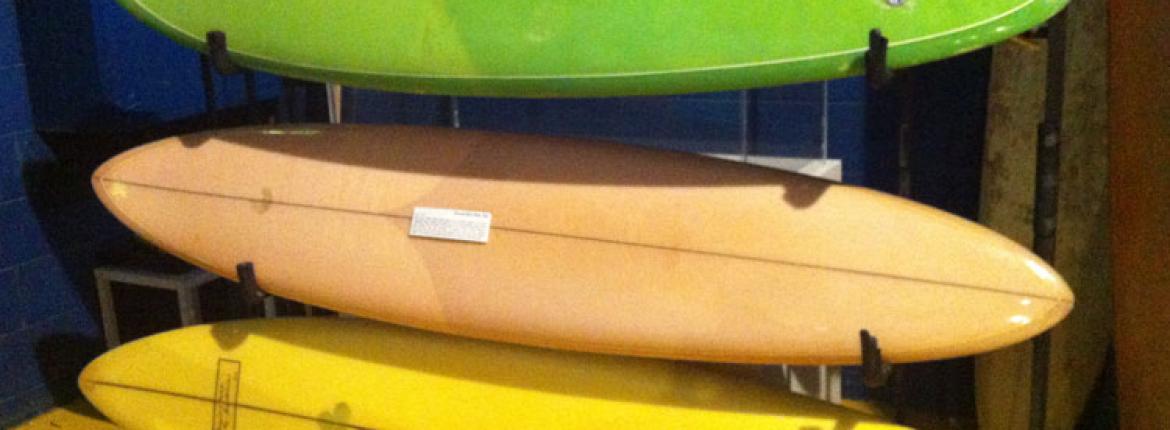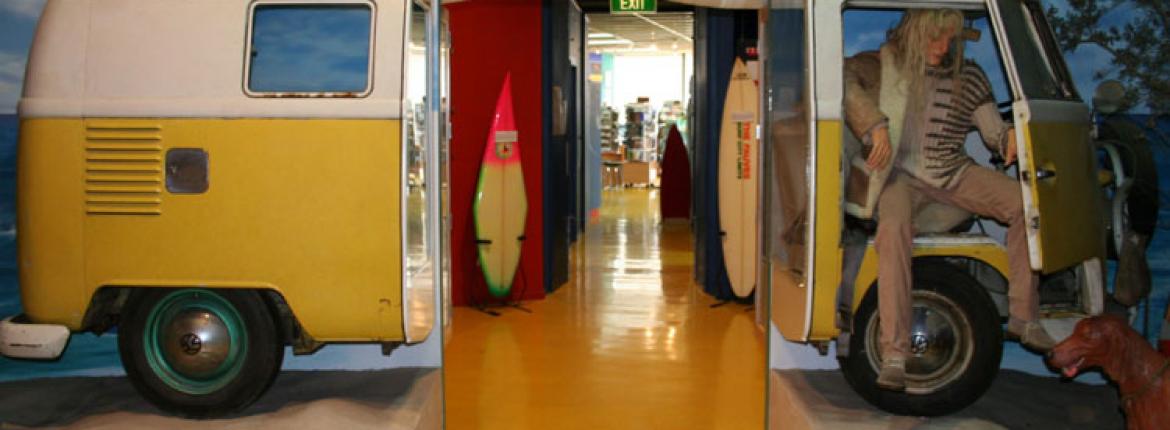On one cover, a woman in a gingham bikini walks towards a shirtless man holding a surfboard, advertising the youthful, fun image of surfing.
The museum is in Surf City Plaza, home to the big surfing brands, such as Quiksilver, Rip Curl, Roxy, Oakley and Billabong. All around us are young hopefuls, clothed from head-to-toe in sponsored surf gear.
We leave them in the stores and head inside the museum, which begins with the first written description of the sport, dating to the 1700s, as well as the first visual record – a scene showing Captain Cook’s fleet arriving in Kealakekua Bay, Hawaii in 1778, with a figure paddling out on a surfboard to greet them.
From here, there’s history closer to home, such as information about Bells Beach, named after Scottish settlers to the region, and more personal accounts, such as a flippable photo album of Surf Coast grandmother, Mary Prince. “I was surfing before I was old enough for school,” says Mary. “I don’t recall anyone teaching me how to surf; I just followed my brothers and did what they did.”
There’s also 26-year-old Kat Charles, who talks of the link between surfing and creativity. She plays the drums, as well as being an artist and photographer, and says that surfing has helped her see the world, working as a surf coach in France and Morocco.
“Being a surfer is grounding, humbling and beautiful,” says Kat. “It creates such an incredible lifestyle and attracts really good people, with good spirits and respect for nature. Surfing has set me on a good path for life.”
Surfboards are scattered throughout the  museum: simple ones – such as a trio of lime, lemon and pastel pink boards – to busy boards covered in surf lingo and tall tales. Further along, there’s a wooden walkway with a lip of a wave breaking overhead. There’s also a Surfing Hall of Fame, which has legendary surfers’ boards plastered with their images and stories.
museum: simple ones – such as a trio of lime, lemon and pastel pink boards – to busy boards covered in surf lingo and tall tales. Further along, there’s a wooden walkway with a lip of a wave breaking overhead. There’s also a Surfing Hall of Fame, which has legendary surfers’ boards plastered with their images and stories.
We walk past a suitcase straight from the 70s, stuffed with surf memorabilia: signed surfboard fins, Hawaiian leis and Polaroids. Cabinets are filled with trophies, while walls are crowded with surf music and film posters. A Kombi van has been opened up so visitors can walk through its middle – a bikini top, sneakers, a guitar and sleeping bag are strewn across its floor.
Next is a screening theatre, set up with beach chairs, walls lined with nostalgic surf pictures. A film shows a group who surfed 50 states on no budget, driving around America in an ice cream truck.
One surfer on the film says: “Don’t let anyone tell you you can’t do something. If you’re passionate about it, you can do it.”
It sums up the anti-establishment surfing culture, which outsiders often mistakenly consider lazy, rather than laid-back. This impressive collection is testament to the power of persistence all surfers know exists – there’s always another wave, another possibility, just over the horizon.
Reported by Danielle Wright for our AA Directions Winter 2013 issue






